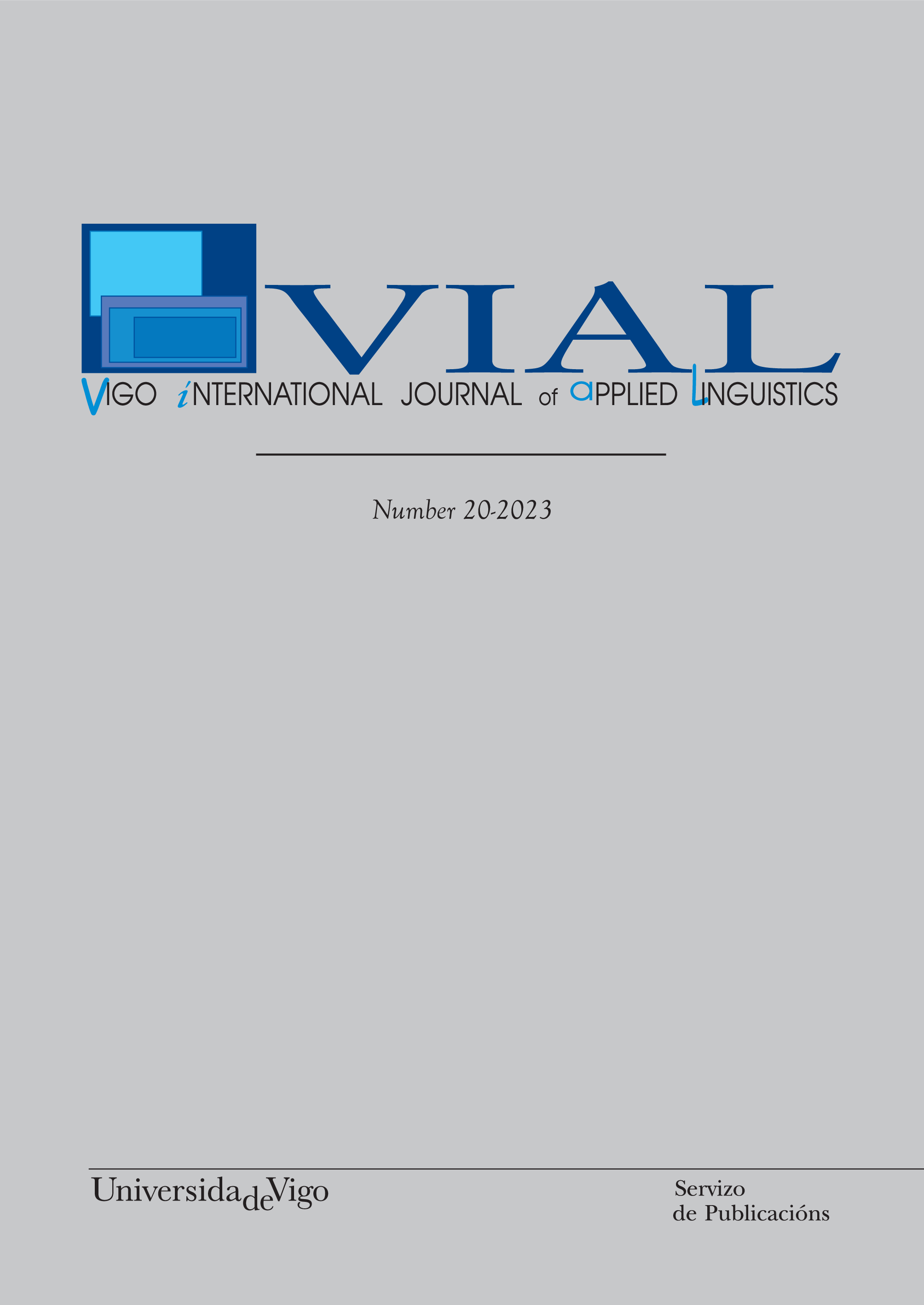Collaborative writing and patterns of interaction in young learners: The interplay between pair dynamics and pairing method in LRE production
DOI:
https://doi.org/10.35869/vial.v0i20.4354Keywords:
Language-related episodes (LRE), patterns of interaction, pair formation method, collaborative writing, form-focused LREsAbstract
A considerable body of research within the Socio-cultural theory (Lantolf & Appel, 1994) examines how learners express their linguistic gaps verbally, or question their own or others’ language use when writing collaboratively, i.e., produce Languagerelated episodes (LREs; Swain & Lapkin, 1998). Several studies have also explored the effect that different patterns of interaction (Storch, 2002) have on the production of LREs with adult learners (e.g., Mozaffari, 2017; Storch & Aldosari 2013), but little research has compared the effect of these patterns of interaction and pair formation method (i.e., student-selected and proficiency-matched) on young EFL learners’ ability to attend to language, and much less on the type of grammatical features they focus on in LREs.
This study examines young EFL learners’ (aged 10-12) production of LREs and pair dynamics in student-selected vs. proficiency-matched groups while completing a collaborative writing task. It was found that young EFL learners mainly exhibit a collaborative type of dynamics and resolved more LREs accurately, together with expert-novice groups. Matched proficiency was more beneficial, as these groups produced more target-like LREs. As per the type of form-focused LREs produced, these young learners focused primarily on spelling issues and less on grammatical knowledge-induced ones.
Downloads
Downloads
Published
Issue
Section
License
Revistas_UVigo es el portal de publicación en acceso abierto de las revistas de la Universidade de Vigo. La puesta a disposición y comunicación pública de las obras en el portal se efectúa bajo licencias Creative Commons (CC).
Para cuestiones de responsabilidades, propiedad intelectual y protección de datos consulte el aviso legal de la Universidade de Vigo.



